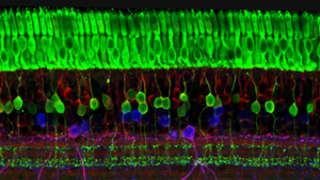
Otras condiciones retinianas
Otras condiciones retinianas
Enfermedad de Refsum
La enfermedad de Refsum es un desorden extremadamente raro y complejo que afecta muchas partes del cuerpo. Una forma de la enfermedad retiniana degenerativa conocida como retinitis pigmentaria (RP) es una característica común de esta enfermedad.
Distrofia de conos y bastones
La distrofia de conos y bastones resulta de la pérdida primaria de de los bastones fotorreceptores, seguido de la pérdida de los conos.
Enfermedad de Oguchi
Las características son una hemeralopía congénita y estática, y una coloración difusa amarilla o gris del fondo de ojo. Luego de 2 o 3 horas es oscuridad total, el color normal del fondo de ojo vuelve. La condición es más frecuente en Japón. Ve a hemeralopía (310500) para ver comentarios sobre el uso de este término, opuesto al término nictalopía.
Malattia Leventinese
En la adultez temprana aparecen característicos y pequeños puntos redondos blancos (drusas) involucrados en el polo posterior del ojo, incluyendo las áreas de la mácula y disco óptico. Progresa para formar un patrón de mosaicos que Doyne (1899) acertadamente calificó como el 'panal' que ocurre a partir de ahí. Doyne consideró que representa la 'coroiditis.' Sin embargo, Collins (1913) mostró que los cambios consistían en la inflamación en la parte interior de la membrana de Bruch. La visión fallida usualmente se desarrolla considerablemente más tarde que el cambio oftalmológico. Robert Walter Doyne (1857-1916) fue un oftalmólogo en Oxford, Inglaterra. Pearce (1967) realizó un extenso estudio de 6 familiares viviendo cerca de Oxford. Algunos y posiblemente todos hayan sido descendientes de un ancestro común. Se encontró una herencia dominante con una manifestación completa de la cualidad en personas que sobrevivieron más allá de la adultez temprana. Familias que vivían en cualquier lugar que no sea Inglaterra han sido informadas (ver referencias dads por Pearce, 1968). Maumenee (1982) sugirió que esto puede ser fundamentalmente el mismo desorden que las drusas de la membrana de Bruch (126700).
Distrofia de conos y bastones
La distrofia retiniana de conos y bastones (CRD) característicamente conlleva a una deficiencia temprana de la visión. Una pérdida inicial de la visión del color y de la agudeza visual es seguida de una nictalopía (ceguera nocturna) y de la pérdida de los campos visuales periféricos. En casos extremos, estos síntomas progresivos están acompañados de una pigmentación retiniana avanzada y bien difundida, y de una atrofia corioretinal de la retina central y periférica (Moore, 1992). Evans et al. (1995) encontraron ceguera completa (sin percepción de luz) en sólo 3 de los 34 pacientes estudiados, y estos 3 tenían más de 65 años de edad. Se encontraron serios efectos en la agudeza visual (sólo percepción de luz) en otros 10 pacientes; sin embargo, la edad promedio era de 60,3 años. Todos los demás pacientes retuvieron algo de agudeza visual. En muchas familias, tal vez la mayoría, no se encontró atrofia coreoretinal central y periférica (Tzekov, 1998).
Monocromatismo de conos azules
El monocromatismo de conos azules se caracteriza de una pobre visión central y discriminación de color, nistagmo infantil, y una apariencia retiniana casi normal. Las funciones psicofisiológicas de tanto bastones como conos azules están preservadas (Lewis et al., 1987). Se dice que la frecuencia de acromatopsia es de aproximadamente 1 en 100.000 personas. La primera descripción detallada es la dada por Huddart (1777). El sujeto de ese informe 'no podía hacer más que adivinar el nombre de cualquier color; aún así podía distinguir blanco de negro, o negro de cualquier color luminoso o brillante… Tenía 2 hermanos varones en las mismas circunstancias de visión; y 2 hermanos y hermana que, al igual que sus padres, no tenían nada de este defecto.' Este desorden fue previamente interpretado como ceguera total de color. La información presentada por Spivey (1965) indicó que las personas afectadas pueden ver pequeños objetos azules en un gran campo amarillo y viceversa. Estos casos han sido diversamente denominados ceguera de color parcialmente completa, o acromatopsia incompleta. Blackwell y Blackwell (1961) describieron familias acromatópicas en las que parecía haber presentes unos pocos conos azules. Ver comentarios de Alpern et al. (1960). Sloan (1964) también tenía evidencia de la presencia de unos pocos conos rojos en casos de acromatopsia completa. Bromley (1974) mostró un amplio grupo emparentado con este desorden en un típico patrón recesivo vinculado con X.
Para aprender sobre pruebas clínicas en curso para enfermedades retinianas, visita www.ClinicalTrials.gov.
Next Section
Read the Most Recent Research on Otras condiciones retinianas
Saltar a la Sección
Latest News
-
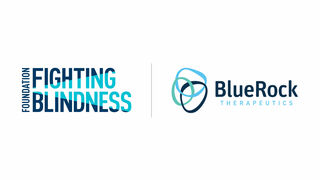
Mar 25, 2024
BlueRock Therapeutics and Foundation Fighting Blindness announce collaboration to expand the Uni-Rare natural history study of patients living with inherited retinal diseases
Foundation NewsCollaboration will add a new multi-gene cohort of patients living with inherited retinal diseases. Data insights from the new study cohort will inform the future clinical trial design for BlueRock’s pipeline of cell therapies for treating blindness.
-
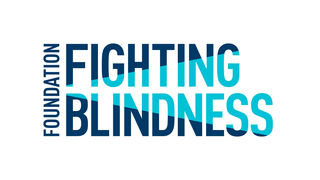
Feb 6, 2024
Foundation Fighting Blindness Launches GYROS, a Natural History Study for People with Gyrate Atrophy
Foundation NewsGyrate atrophy is an inherited retinal disease—causing progressive vision loss. GYROS results will help researchers design clinical trials for an emerging gyrate atrophy gene therapy.
-
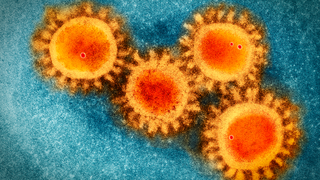
Mar 31, 2020
COVID-19 Resources
Foundation NewsThe Foundation Fighting Blindness is closely monitoring the COVID-19 situation and its impact on the IRD community.
-
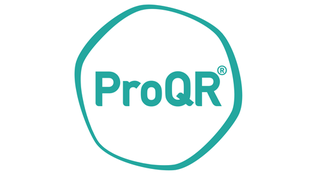
Feb 6, 2020
ProQR Therapeutics Teams Up with the Foundation Fighting Blindness and Blueprint Genetics to Support the My Retina Tracker® Program for People Living with Inherited Retinal Diseases
Foundation NewsMy Retina Tracker Program is the highest volume IRD genetic testing program in the U.S.
-
Oct 2, 2019
Blueprint Genetics, InformedDNA and the Foundation Fighting Blindness launch an open access program for patients with inherited retinal disease in the United States
Foundation NewsThe program will offer patients with inherited retinal disease no-cost genetic testing and genetic counseling in the United States. Look for updated information on how to participate to be posted in mid-October, with program registration starting shortly thereafter.
-
Aug 16, 2019
Foundation Fighting Blindness Investing Nearly $6.5 Million in New Grants
Foundation NewsThe newly funded research efforts include several therapies that have strong potential to treat a wide range of inherited retinal diseases.
-
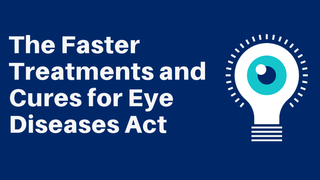
May 9, 2019
Foundation Fighting Blindness Endorses 'Eye Bonds' Legislation
Foundation NewsBipartisan Bill Will Stimulate Up to $1 Billion in New Funding for Blindness Research
-
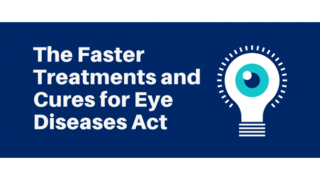
Jul 19, 2018
Foundation Fighting Blindness Urges Congress to Pass ‘Eye-Bonds’ Legislation
Foundation NewsBill Introduced in U.S. House Would Speed Up Cures for Blindness
-

Jun 8, 2018
Foundation Fighting Blindness and CheckedUp® Partner to Educate Retinal-Disease Patients About Research, Resources, and Emerging Therapies During Doctor Visits
Foundation NewsThe Foundation Fighting Blindness (the Foundation) and CheckedUp have formed a collaborative partnership to deliver patient-friendly diagnostic and disease-management information to people with retinal diseases such as age-related macular degeneration, retinitis pigmentosa, and Stargardt disease during their visits to eye doctors.




